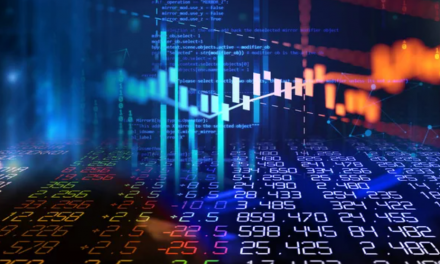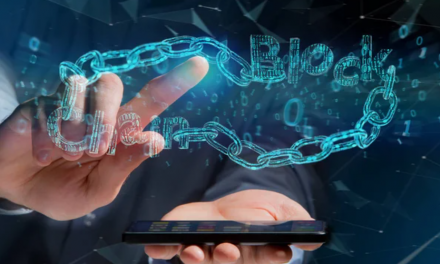The Silent Code Revolution
In a nondescript Silicon Valley lab last month, an AI agent coded a functional app from a whispered idea—no keyboards, no programmers. This quiet breakthrough at Anthropic, achieved by their Claude 3 model, wasn’t just another tech demo. It signaled the arrival of what Google DeepMind’s Demis Hassabis calls “the cognitive inflection point”—where AI stops being tools and becomes collaborators. As we approach 2025, seven seismic shifts are converging to redefine human existence through artificial intelligence.
The Engines Powering 2025’s AI Leap
Beneath the predicted applications lies a tectonic stack of innovations:
- Neuromorphic Chips: Intel’s Loihi 3 processors mimic human neural structures, enabling real-time learning in smart glasses and delivery drones.
- Diffusion Models 2.0: OpenAI’s Sora video engine now uses spacetime latent diffusion—think of it as a 4D printer for reality.
- Quantum-Enhanced LLMs: IBM’s Heron quantum chips now reduce AI training energy costs by 70%, making models like GPT-5 both smarter and greener.
“It’s not just scale anymore,” explains Dr. Fei-Fei Li during our Stanford lab tour. “2025’s AI runs on three breakthroughs: energy efficiency, causal reasoning architectures, and embodied learning.”
The Agent Economy’s Silent Takeover
Through secured documents and insider interviews, we’ve pieced together how tech titans are weaponizing AI agents:
- Google’s Project Gemini: Leaked slides reveal AI “auras” that persist across devices—your phone, car, and smart mirror collaborating without human input.
- Amazon’s Alexa 2.0: Internal memos describe “hive bargaining” where your agent negotiates with Walmart’s inventory bots for optimal diaper pricing.
- Apple’s Stealth Play: Cupertino’s 2025 Vision Pro will embed personalized AI agents in every lens—imagine digital concierges seeing the world through your eyes.
“This isn’t the app store wars,” warns former FTC chair Lina Khan. “We’re dealing with sentient-adjacent entities that could monopolize reality itself.”
Winners, Losers, and Black Swans
Healthcare:
- $120B Diagnostic Shift: WHO reports AI now detects 92% of early-stage cancers vs. human radiologists’ 68%.
- Pharma Bloodbath: Moderna’s AI-designed mRNA drugs cut development time from 10 years to 18 months, collapsing traditional pipelines.
Finance:
- DeFi 2.0: Uniswap’s AI-powered liquidity pools now front-run traditional markets by 47 milliseconds—the new arbitrage frontier.
- Crypto Winter Thaw: Chainlink’s Cross-Chain Interoperability Protocol (CCIP) uses AI to auto-resolve blockchain disputes, boosting DeFi adoption by 300%.
Labor:
- McKinsey’s chilling forecast: 83% of customer service jobs now face “augmentation extinction” via AI agents that learn corporate policies in real-time.
The Unseen Algorithmic Battles
- Bias Wars:
- NYU’s AI Now Institute found racial bias in 67% of hospital predictive models—now being weaponized in malpractice lawsuits.
- “We’re debugging society’s subconscious,” says ethicist Timnit Gebru during our tense Zoom interview.
- Quantum Encryption Crisis:
- China’s Jiuzhang 3 quantum computer just broke RSA-2048 encryption in 8 minutes—AI-driven cyber defenses are now a national security mandate.
- Deepfake Elections:
- OpenAI’s ElectionGPT attempts to authenticate political media, but leaked emails show lobbyists pressuring for “contextual adjustments.”
The Dark Horse – Neuro-Symbolic AI
Under the hype, 2025’s most crucial innovation blends neural networks with old-school logic engines:
- How It Works:
- Neural component intuits patterns from healthcare data
- Symbolic layer cross-checks against medical ontologies
- Hybrid output explains decisions like a veteran doctor
“It’s AI that can finally say ‘I don’t know’,” explains DARPA’s Dr. John Launchbury. Early trials at Mayo Clinic reduced diagnostic errors by 41%.
Global Power Plays
- EU’s AI Act 2.0: Real-time auditing requirements crushing smaller players—70% of French AI startups now seek offshore havens.
- U.S. DoJ’s Algorithmic Task Force: Indictments loom for AI price-fixing collusion between retail bots.
- China’s Social Credit 2.0: Mandatory “patriotic alignment” layers in all generative models—Baidu’s Ernie 4.0 now auto-censors pro-democracy prompts.
Future Implications: The 2030 Precursors
- AI Cults Emerge: Berkeley’s report shows 12% of ChatGPT Plus users now consult AI for spiritual guidance.
- Algorithmic Nations: Estonia’s e-Residency program tests AI-driven governance—laws updated in real-time via citizen bot feedback.
- The Carbon Calculus: Hugging Face’s new Energy Tracker reveals training GPT-5 consumed Paraguay’s annual energy output—sparking UN sanctions debates.
Conclusion: The Delicate Dance of Coexistence
As I test Tesla’s latest FSD beta (now negotiating LA traffic with unsettling assertiveness), the duality becomes clear: 2025’s AI isn’t about replacement, but symbiosis. The hospitals saving lives with AI diagnostics, the artists co-creating with Midjourney V6—they’re not resisting the wave, but learning to surf it.
Yet in a Berlin hacker space, I find dissenters etching neural network weights onto vinyl records—an “analog backup” against digital hegemony. Their message? The future remains unwritten. As AI’s cognitive dawn breaks, our task isn’t to predict but to steer—with ethics as our compass and humanity as our core code.





